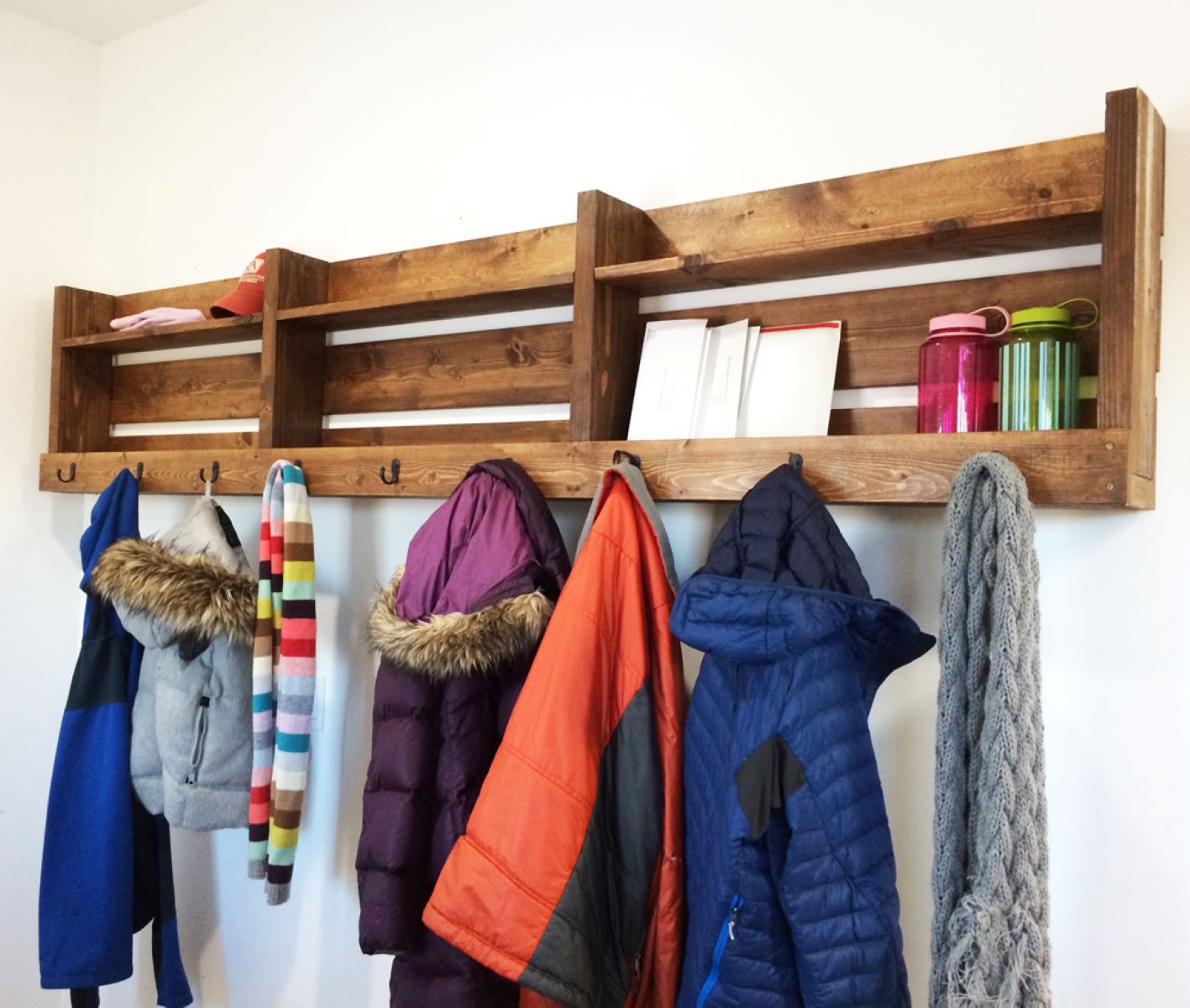

Articles
How To Store Winter Clothes In Small Space
Modified: January 8, 2024
Discover effective strategies for storing your winter clothes in small spaces. Read our articles for expert tips and tricks to maximize your storage space.
(Many of the links in this article redirect to a specific reviewed product. Your purchase of these products through affiliate links helps to generate commission for Storables.com, at no extra cost. Learn more)
Introduction
As the winter season comes to an end, it’s time to pack away those cozy sweaters, bulky jackets, and warm boots. However, if you have a small living space, finding storage solutions for your winter clothes can be a challenge. The key to storing winter clothes in a small space is to maximize every inch of available storage. In this article, we will explore various strategies and tips to help you effectively store your winter wardrobe while optimizing space.
Key Takeaways:
- Maximize every inch of available storage by assessing, decluttering, and utilizing underbed storage, hanging space, shelves, drawers, and over-the-door organizers for efficient winter clothes storage in small spaces.
- Implement a rotation system for off-season clothing to free up space, maintain an organized wardrobe, and prolong garment lifespan. Utilize creative storage solutions while balancing functionality and aesthetics.
Read more: How To Store Winter Shoes
Assess Your Winter Wardrobe
Before you start storing your winter clothes, it’s important to assess your wardrobe and determine which pieces you truly need and want to keep. Take the time to go through each item and ask yourself if it’s still in good condition, if you’ve worn it in the past year, and if it’s a staple for the colder months. This will help you declutter and make room for the clothes that you truly love and wear.
Consider donating or selling clothes that no longer fit or that you no longer enjoy wearing. This not only helps free up space but also allows someone else to benefit from your gently used items. Remember, your goal is to create a streamlined and organized winter wardrobe that fits within your small storage space.
Once you have assessed your winter wardrobe, you can move on to the next step of sorting and decluttering.
Sort and Declutter
Sorting and decluttering your winter clothes is essential to maximize storage space. Start by dividing your winter wardrobe into categories such as sweaters, jackets, pants, and accessories. This will allow you to see what you have and make it easier to organize.
Next, go through each category and be ruthless in your decluttering process. Remove any items that are worn out, damaged, or no longer fit. Consider if you have duplicate items or pieces that you haven’t worn in years. These can be donated or discarded.
If you’re unsure about letting go of certain items, ask yourself if they serve a practical purpose or bring you joy. The KonMari method suggests keeping items that spark joy and letting go of those that don’t. This can help you make decisions and create a wardrobe that truly reflects your style and preferences.
Once you have completed the sorting and decluttering process, you will have a more manageable selection of winter clothes to store.
Utilize Underbed Storage
When it comes to storing winter clothes in a small space, don’t overlook the potential of the area under your bed. Underbed storage can be a game-changer, providing ample space to store your winter wardrobe out of sight. There are several underbed storage options to consider:
- Underbed Storage Boxes: Invest in storage boxes specifically designed to fit under your bed. These boxes can be easily slid in and out, allowing easy access to your winter clothes. Look for boxes with lids to keep your clothes protected from dust and pests.
- Vacuum Storage Bags: Vacuum storage bags are a great option for compressing your bulky winter clothes. These bags allow you to minimize the volume of your clothes by removing excess air. Simply place your clothes in the bag, seal it, and use a vacuum cleaner to suck out the air. This not only saves space but also helps protect your clothes from moisture and pests.
- Rolling Storage Bins: Opt for rolling storage bins that can be easily rolled in and out from under the bed. These bins offer convenient storage and organization, allowing you to sort your winter clothes by category or outfit.
Before utilizing underbed storage, make sure to measure the height of the space under your bed to ensure that your chosen storage solution fits comfortably. This will help you make the most of this often underutilized storage space.
Utilize Hanging Space
Another effective way to store your winter clothes in a small space is by utilizing hanging space. Maximize your closet or wardrobe by utilizing the available vertical space for hanging your winter garments. Here are some tips to make the most of your hanging space:
- Use Double-Hang Closet Rods: Install double-hang closet rods to maximize vertical space. These additional rods create a second tier for hanging garments, effectively doubling your storage capacity.
- Invest in Slimline Hangers: Replace bulky hangers with slimline hangers to optimize space. Slimline hangers are thinner and take up less space, allowing you to fit more items in your closet.
- Organize by Category: Group your winter clothes by category and hang them accordingly. Keep jackets and coats together, sweaters in one section, and pants in another. This makes it easier to find specific items and keeps your closet organized.
- Consider Cascading Hangers: Cascading hangers are a great space-saving solution for items like scarves, belts, and ties. These hangers feature multiple hooks or loops, allowing you to hang multiple items in one spot without taking up too much vertical space.
To maximize your hanging space, it’s important to organize your clothes in a way that makes sense to you and your daily routine. This will make it easier to locate and retrieve items when needed.
Read more: How To Store Winter Hats
Utilize Shelf Space
Utilizing shelf space is an efficient way to store your winter clothes in a small space. Whether you have built-in shelves or freestanding storage units, here are some tips to help you make the most of your shelf space:
- Use Baskets or Fabric Bins: Group similar items like hats, gloves, and scarves in baskets or fabric bins. This helps to keep them organized and easily accessible. Labeling the baskets or bins can further enhance organization.
- Fold Sweaters and Stack: Instead of hanging sweaters, which can stretch them out, fold them neatly and stack them on your shelves. Use dividers or shelf organizers to keep the stacks stable and prevent them from toppling over.
- Utilize Shelf Dividers: If you have open shelves, consider using shelf dividers to separate different categories or styles of winter clothes. This helps to maintain an organized and tidy look.
- Make Use of the Top Shelf: The top shelf is often underutilized, but it can be perfect for storing items that are less frequently used, such as heavy coats or seasonal boots.
If you have limited shelf space, consider adding additional shelves to maximize vertical storage. There are various shelving solutions available, including adjustable shelving units or hanging shelves that can be installed in closets or along walls.
By utilizing shelf space effectively, you can keep your winter clothes visible and accessible while optimizing your storage capacity.
Utilize Drawer Space
When it comes to storing winter clothes in a small space, utilizing drawer space is a great way to keep your items organized and easily accessible. Here are some tips to make the most of your drawer storage:
- Use Drawer Dividers: Drawer dividers or organizers help you maximize the space in your drawers and keep different items separated. You can use dividers to create sections for socks, gloves, hats, or other small accessories.
- Roll Instead of Folding: Instead of folding your winter clothes, consider rolling them. Rolling clothes not only saves space in your drawers but also prevents wrinkles and makes it easier to see and access each item.
- Stack in Layers: If you have deep drawers, stack your folded clothes in layers. Start with the heaviest or most frequently used items at the bottom and work your way up. This way, you can easily see and access each layer without disturbing the rest of the clothes.
- Label Your Drawers: Labeling your drawers can be a helpful organization technique. Use sticky labels or small chalkboard signs to identify the contents of each drawer. This will save you time when searching for specific items.
If you find that your drawer space is limited, consider utilizing other storage solutions like underbed storage or hanging organizers to supplement your drawer storage.
By utilizing drawer space effectively, you can keep your winter clothes neatly stored and easily accessible whenever you need them.
Use vacuum-sealed storage bags to compress bulky winter clothes and save space. These bags can be easily stored under the bed or in small closets, maximizing your storage space.
Utilize Over-the-Door Organizers
Over-the-door organizers are a fantastic storage solution for maximizing space in a small area. They can be used to store a variety of items, including winter accessories and smaller garments. Here are some ways to utilize over-the-door organizers for your winter clothes:
- Hats and Gloves: Use small pockets to store your hats, gloves, and other accessories. This keeps them easily accessible and prevents them from getting misplaced or tangled.
- Scarves: Hang scarves on hooks or loops to keep them neat and organized. You can choose a multi-tiered organizer to accommodate several scarves.
- Boots and Shoes: Opt for an over-the-door shoe organizer with pockets to store your winter boots or larger shoes. This prevents them from cluttering the floor of your closet or entryway.
- Belts and Ties: Utilize hooks or loops on the organizer to neatly hang your belts or ties, keeping them easily visible and accessible.
Over-the-door organizers are versatile and can be easily installed without any additional hardware. They make use of vertical space and help declutter your living area by keeping your winter accessories organized and within reach.
If your doors are not suitable for over-the-door organizers, consider using adhesive hooks or wall-mounted organizers to achieve a similar effect on closet walls or bedroom walls.
By utilizing over-the-door organizers, you can efficiently store your winter clothes without taking up valuable floor or shelf space.
Utilize Vacuum Storage Bags
Vacuum storage bags are a game-changer when it comes to storing winter clothes in a small space. These bags provide a compact and efficient way to compress your clothing items, allowing you to save valuable storage space. Here’s how to effectively use vacuum storage bags:
- Sort and Fold: Sort your winter clothes by category before placing them in the vacuum storage bags. Fold each item neatly to optimize space and prevent wrinkles.
- Pack in Layers: Start by placing the heavier or bulkier items at the bottom of the bag, such as coats or sweaters. Add lighter items like scarves or gloves on top. This helps distribute the weight evenly when vacuum-sealing the bag.
- Seal the Bag: Once you have loaded the bag with your winter clothes, seal it tightly using the provided closure. Ensure that all the air valves are securely closed.
- Remove Excess Air: Use a vacuum cleaner with a hose attachment to remove the excess air from the bag. Attach the vacuum nozzle to the valve, and slowly suction out the air. The bag will shrink and compress your clothing items.
- Store in a Dry Area: After vacuum-sealing the bags, store them in a dry area to prevent any moisture or mold buildup. Keep them in a closet, under the bed, or any other suitable storage space.
Vacuum storage bags not only save space but also provide protection against dust, insects, and moisture. They are particularly useful for bulky winter items like jackets, coats, and blankets.
Just be mindful when vacuum-sealing delicate fabrics like cashmere or wool. It’s recommended to add some tissue paper or fabric between these items to protect them from excessive pressure or damage.
By utilizing vacuum storage bags, you can significantly reduce the amount of space your winter clothes take up, allowing for more efficient storage in your small living space.
Read more: How To Store Winter Clothing
Utilize Storage Bins or Boxes
Storage bins or boxes are versatile and practical solutions for organizing and storing winter clothes in a small space. They come in various sizes and styles, allowing you to customize your storage options. Here’s how to effectively utilize storage bins or boxes:
- Choose Clear Bins: Opt for clear storage bins or boxes, as they allow you to easily see the contents without having to open each one. This makes it convenient when you’re searching for specific items.
- Sort and Categorize: Divide your winter clothes into categories (e.g., sweaters, jackets, pants) and allocate a bin or box for each category. This helps keep your items organized and makes it easier to locate them later.
- Label the Bins: Labeling your storage bins or boxes is crucial for quick identification. Use sticky labels or adhesive tags and clearly indicate the contents of each bin. This saves time and prevents you from rummaging through multiple bins to find what you need.
- Utilize Vertical Space: Stack your storage bins or boxes to maximize vertical space. Ensure that the heavier bins or boxes are at the bottom of the stack to maintain stability. Use a step stool or a small ladder to access the higher bins easily.
- Consider Foldable Bins: If you have limited storage space when the winter season is over, consider using foldable storage bins. These collapsible bins can be easily stored away until you need them again.
Storage bins or boxes are not only great for storing your winter clothes but also for keeping them protected from dust, moisture, and pests. They can be stored in closets, under the bed, or even in a storage unit if space is extremely limited.
Remember to periodically go through your storage bins or boxes to reassess and declutter any items you no longer need or want. This will help maintain an organized storage system and prevent unnecessary accumulation of clothes.
By utilizing storage bins or boxes effectively, you can keep your winter clothes neatly stored and easily accessible whenever you need them.
Utilize Wall Space with Hooks or Pegboards
When it comes to maximizing storage space in a small area, don’t overlook the potential of your walls. By utilizing wall space with hooks or pegboards, you can create a functional and organized storage area for your winter clothes. Here’s how:
- Install Hooks: Install hooks on your walls to hang coats, jackets, scarves, and bags. Choose hooks that are sturdy and can support the weight of your winter garments. Place the hooks strategically near the entrance or in your closet for easy access.
- Use Command Hooks: If you are unable to install permanent hooks or don’t want to damage your walls, consider using removable adhesive hooks, such as Command Hooks. These hooks can be easily installed and removed without leaving any marks or residue on your walls.
- Hang a Pegboard: Install a pegboard on your wall and add hooks or pegs to create a customizable storage solution. You can hang jackets, hats, scarves, and even small baskets or containers for gloves or other accessories. Pegboards are versatile and allow you to adjust the placement of the hooks as needed.
- Design a Creative Display: Arrange your winter clothes on the wall hooks or pegboard in a visually appealing manner. Create a pattern or mix different colors and textures for an artistic display. Not only does this save space, but it also adds a unique element to your decor.
- Utilize Overhead Space: If you have high ceilings, consider installing hooks or a storage system on the wall near the ceiling. This allows you to hang larger winter items, such as ski jackets or heavier coats, without taking up valuable floor or closet space.
Utilizing wall space with hooks or pegboards not only helps keep your winter clothes organized but also adds functionality and style to your living space. It’s an efficient way to display and access your winter garments while maximizing storage space in a small area.
Remember to regularly check the hooks or pegs for stability and weight capacity. Avoid overloading the hooks or pegboard to prevent accidents or damage to your walls.
By utilizing wall space effectively, you can free up other storage areas and create a visually appealing storage solution for your winter clothes.
Utilize Vertical Space with Stackable Storage
When it comes to maximizing storage space in a small area, one of the most effective strategies is to utilize vertical space. By utilizing vertical space with stackable storage solutions, you can make the most of every inch of available space. Here’s how:
- Invest in Stackable Storage Bins: Purchase stackable storage bins or boxes that can be easily stacked on top of one another. Opt for bins with secure lids to keep your winter clothes protected from dust, pests, and moisture.
- Choose Uniformly Sized Containers: Select storage containers that are of the same shape and size. This ensures stability when stacking them and maximizes the use of vertical space without wasting any gaps.
- Organize by Category: Sort your winter clothes by category before placing them in the stackable storage. Group similar items together, such as sweaters, jackets, or accessories, and label each container accordingly. This makes it easier to locate specific items when needed.
- Place Heavy Items at the Bottom: When stacking the storage containers, ensure that the heavier or bulkier items are placed at the bottom for stability. This prevents the stack from toppling over and damaging your clothes or the containers.
- Utilize Shelf Space: Dedicate a specific shelf or area to stack your storage containers, creating a neat and organized display. If you don’t have shelves, consider purchasing freestanding wire racks or shelving units to accommodate the stackable storage.
- Opt for Transparent Containers: If possible, choose transparent or semi-transparent storage containers. This allows you to easily see the contents of each container without having to move or open them, saving you time and effort.
Stackable storage solutions are excellent for utilizing vertical space in closets, under beds, or any other area where you have limited space. They help you maximize storage capacity while keeping your winter clothes safely stored and easily accessible.
Remember to assess the weight-bearing capacity of your storage area or shelves to ensure that they can safely support the stackable storage containers. Avoid stacking the containers too high, as it may become unstable and pose a safety hazard.
By utilizing vertical space with stackable storage, you can optimize your storage options and create a clutter-free environment even in small living spaces.
Rotate and Store Off-Season Clothing
One effective strategy for maximizing storage space and keeping your small living area organized is to rotate and store off-season clothing. By swapping out your winter clothes for summer or spring garments (and vice versa), you can free up valuable space and ensure that only the current season’s clothing is readily accessible. Here’s how to rotate and store off-season clothing:
- Assess Your Wardrobe: Before rotating your clothing, take the time to assess your wardrobe and determine which items are suitable for the current season. This allows you to select the appropriate clothing to store and helps declutter your closet.
- Sort and Pack: Sort through your off-season clothing and separate them by category, such as sweaters, heavy jackets, or boots. Fold them neatly and place them in storage bins or vacuum-sealed bags.
- Label and Organize: Label each storage container with the contents and the season to make retrieval easier in the future. Consider categorizing the containers by specific clothing types or occasion if you have a large wardrobe.
- Store in a Separate Area: Find a designated storage area for your off-season clothing. This could be under the bed, in a closet, or even a storage unit if you don’t have enough space at home. Ensure the storage area is clean, dry, and free from excessive heat, moisture, or pests.
- Rotate Seasonal Clothing: As the seasons change, rotate your clothing by swapping out the stored bins or bags with the current season’s garments. This keeps your closet clutter-free and allows you to easily access the clothing appropriate for the current weather.
- Donate or Discard Unused Items: Use the rotation process as an opportunity to reassess your wardrobe and consider donating or discarding any clothing items that you no longer love or wear. This helps keep your wardrobe streamlined and reduces unnecessary clutter.
Rotating and storing off-season clothing on a regular basis not only maximizes storage space but also helps prolong the lifespan of your garments by keeping them protected from the elements and reducing wear and tear. It also allows you to create a focused and organized wardrobe for each season.
Remember to periodically review your stored off-season clothing to ensure that everything is still in good condition and fits your current style. This way, you can make adjustments and maintain a curated wardrobe throughout the year.
By implementing a rotation system for your off-season clothing, you can effectively manage your wardrobe and keep your small living space well-organized and clutter-free.
Read more: How To Store Winter Boots
Conclusion
In conclusion, storing winter clothes in a small space requires strategic thinking and efficient use of available storage options. By assessing your winter wardrobe, sorting and decluttering, and utilizing various storage solutions, you can optimize space while keeping your winter clothes organized and easily accessible.
Utilizing underbed storage, hanging space, shelves, drawers, over-the-door organizers, vacuum storage bags, storage bins, hooks, pegboards, and stackable storage can significantly increase your storage capacity. These solutions effectively utilize both horizontal and vertical space, allowing you to make the most of your small living area.
Additionally, rotating and storing off-season clothing ensures that only the current season’s clothing is readily accessible, freeing up space and maintaining an organized wardrobe. This practice helps you streamline your clothing collection and reduces clutter.
Throughout the process, it is important to maintain a balance between functionality and aesthetics. By labeling storage containers, using transparent or labeled bins, and creating visually appealing displays, you can achieve an organized and visually appealing storage system.
Remember to periodically reassess your winter clothes, donating or discarding items that you no longer need or enjoy. Regularly evaluate your storage system to ensure it remains efficient and suits your evolving needs.
In conclusion, with careful planning, sorting, and utilizing creative storage solutions, storing winter clothes in a small space can be a manageable task. By optimizing space and maintaining an organized wardrobe, you can make the most of your living area while keeping your winter clothes well-preserved and easily accessible.
Frequently Asked Questions about How To Store Winter Clothes In Small Space
Was this page helpful?
At Storables.com, we guarantee accurate and reliable information. Our content, validated by Expert Board Contributors, is crafted following stringent Editorial Policies. We're committed to providing you with well-researched, expert-backed insights for all your informational needs.



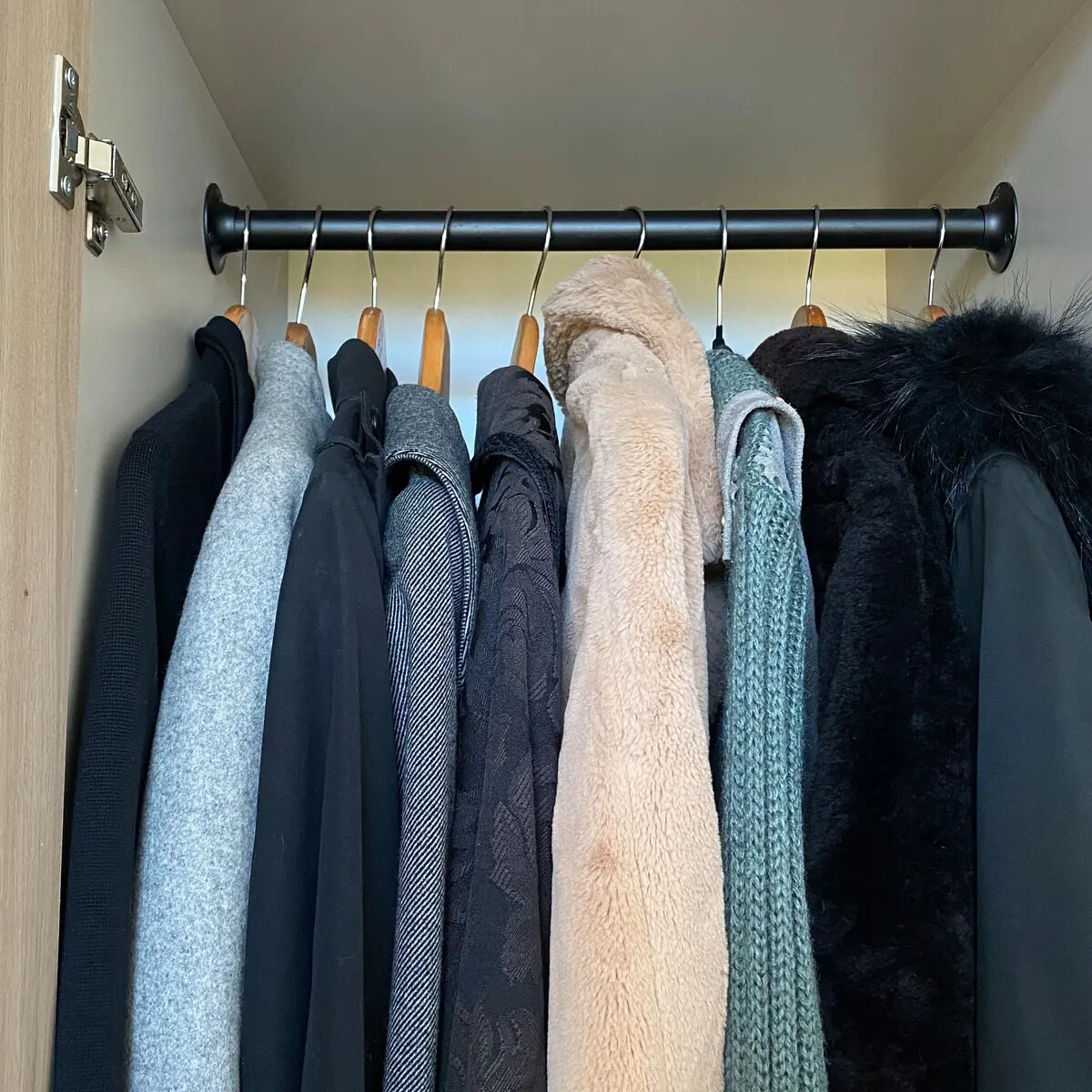
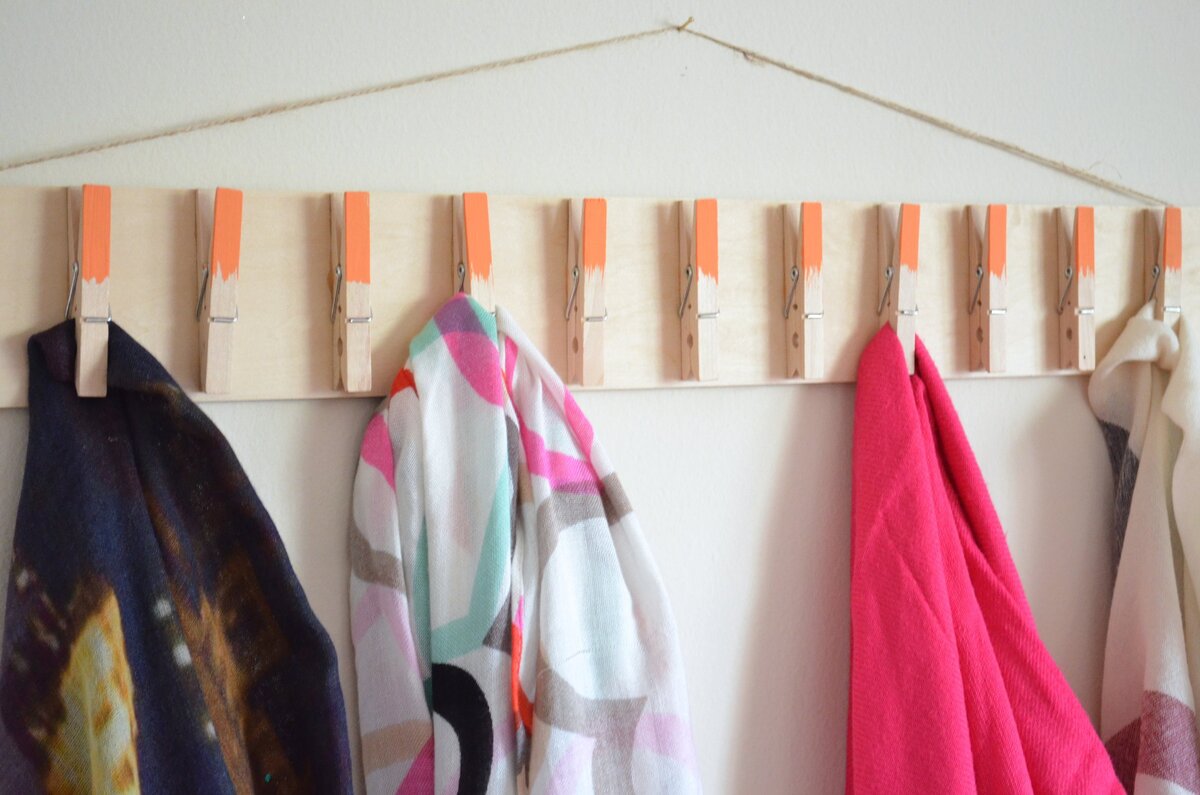

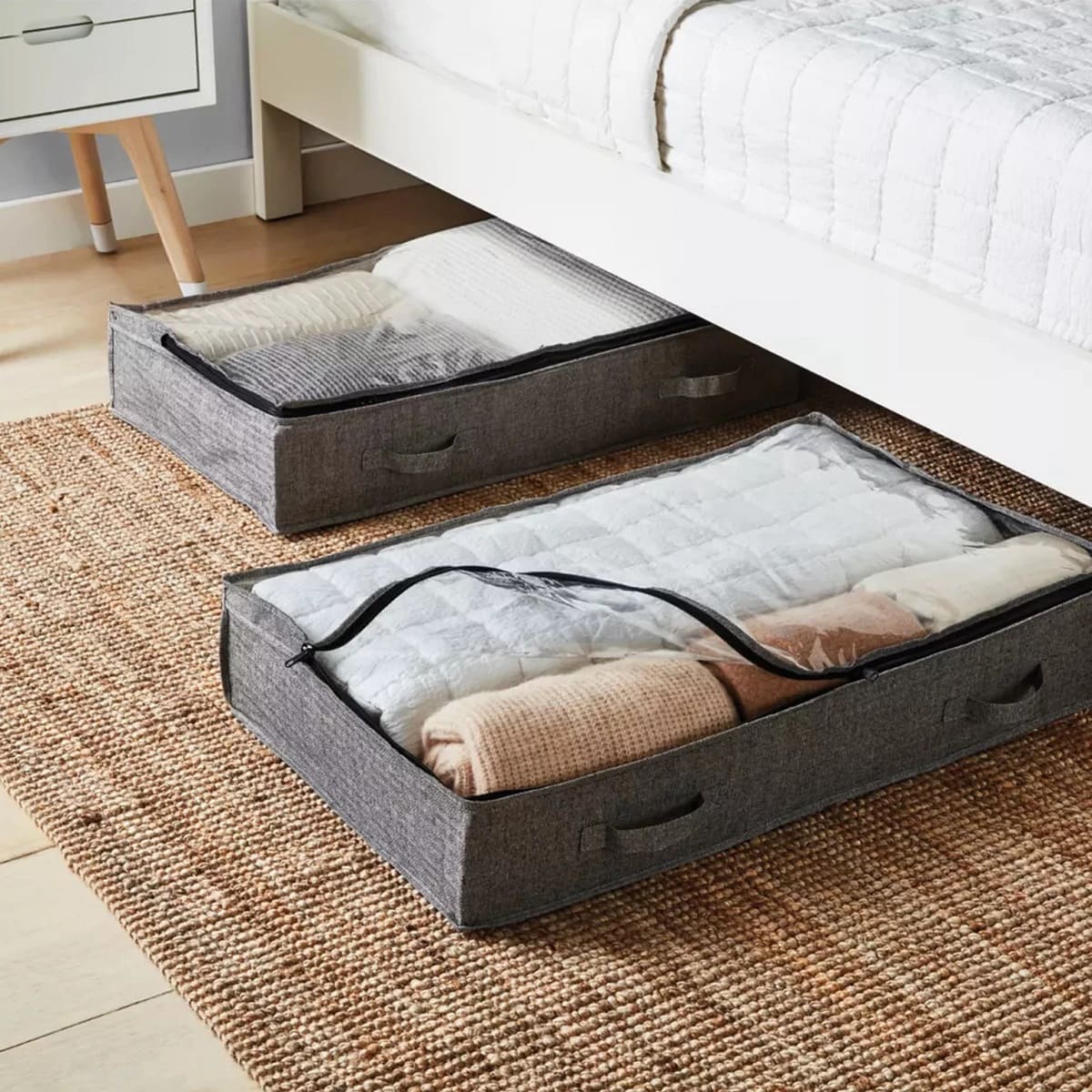
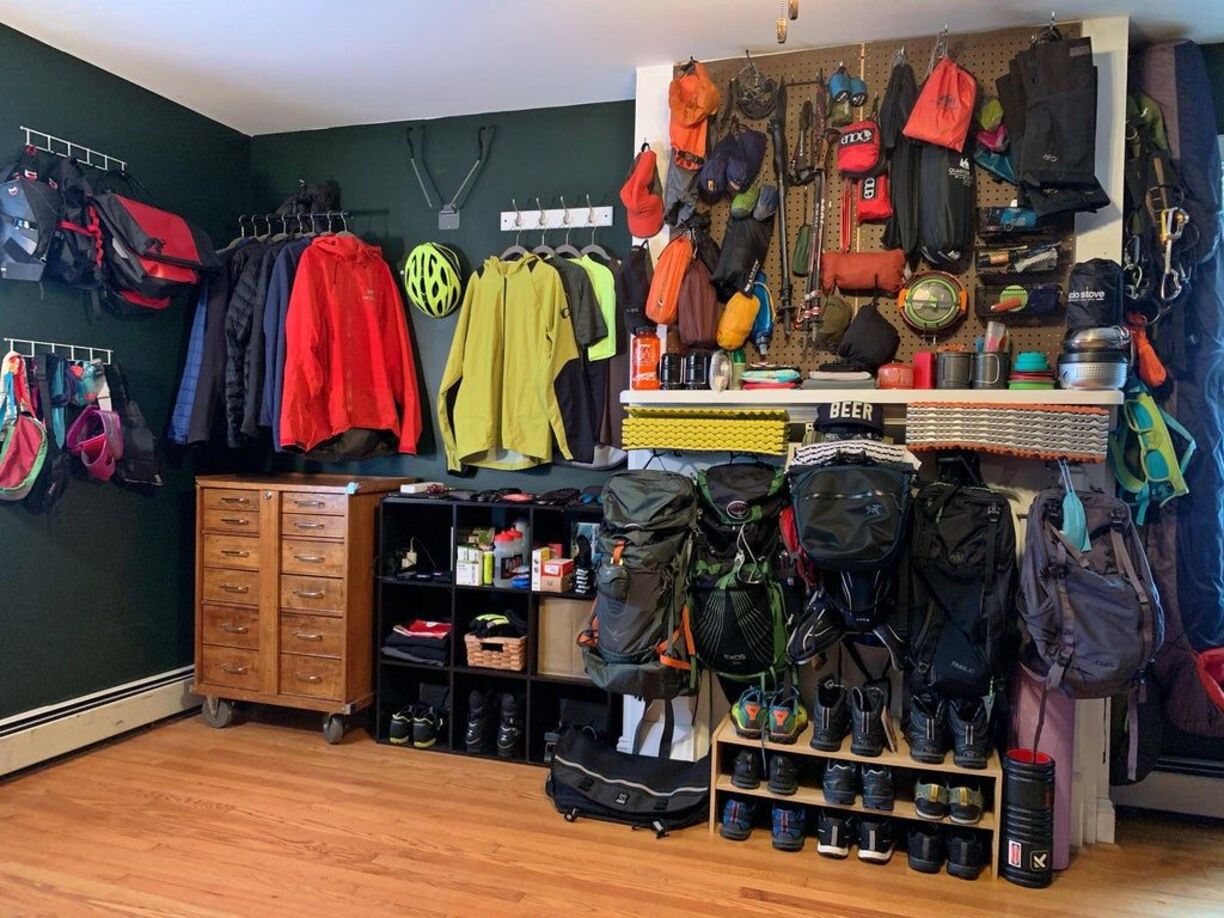
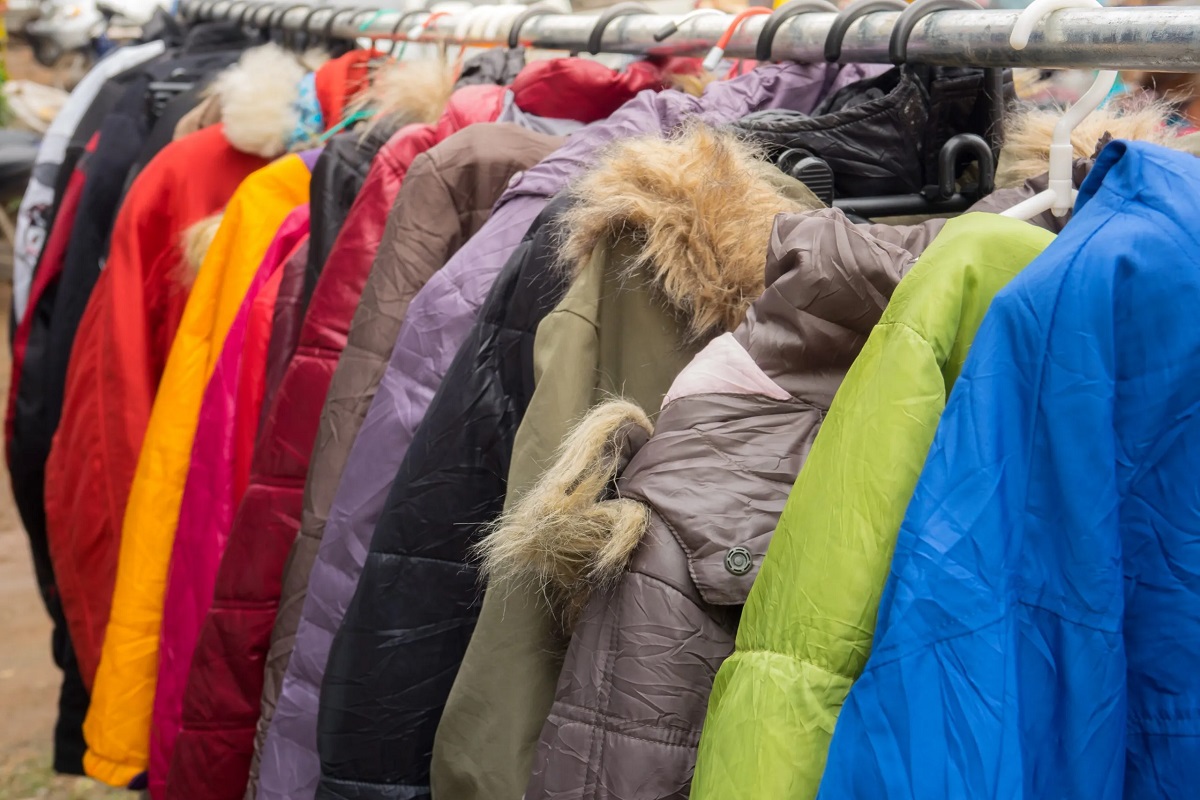
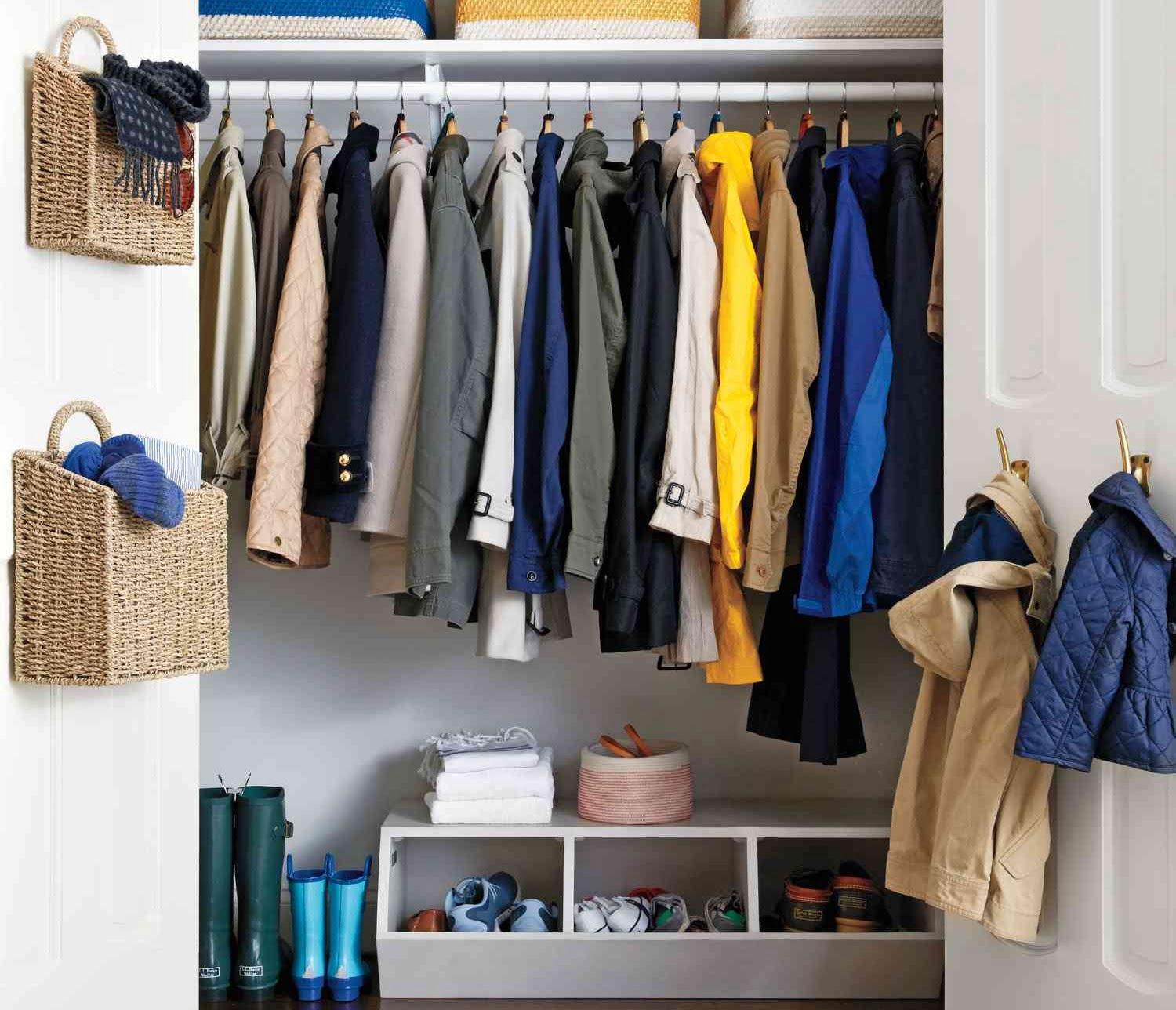

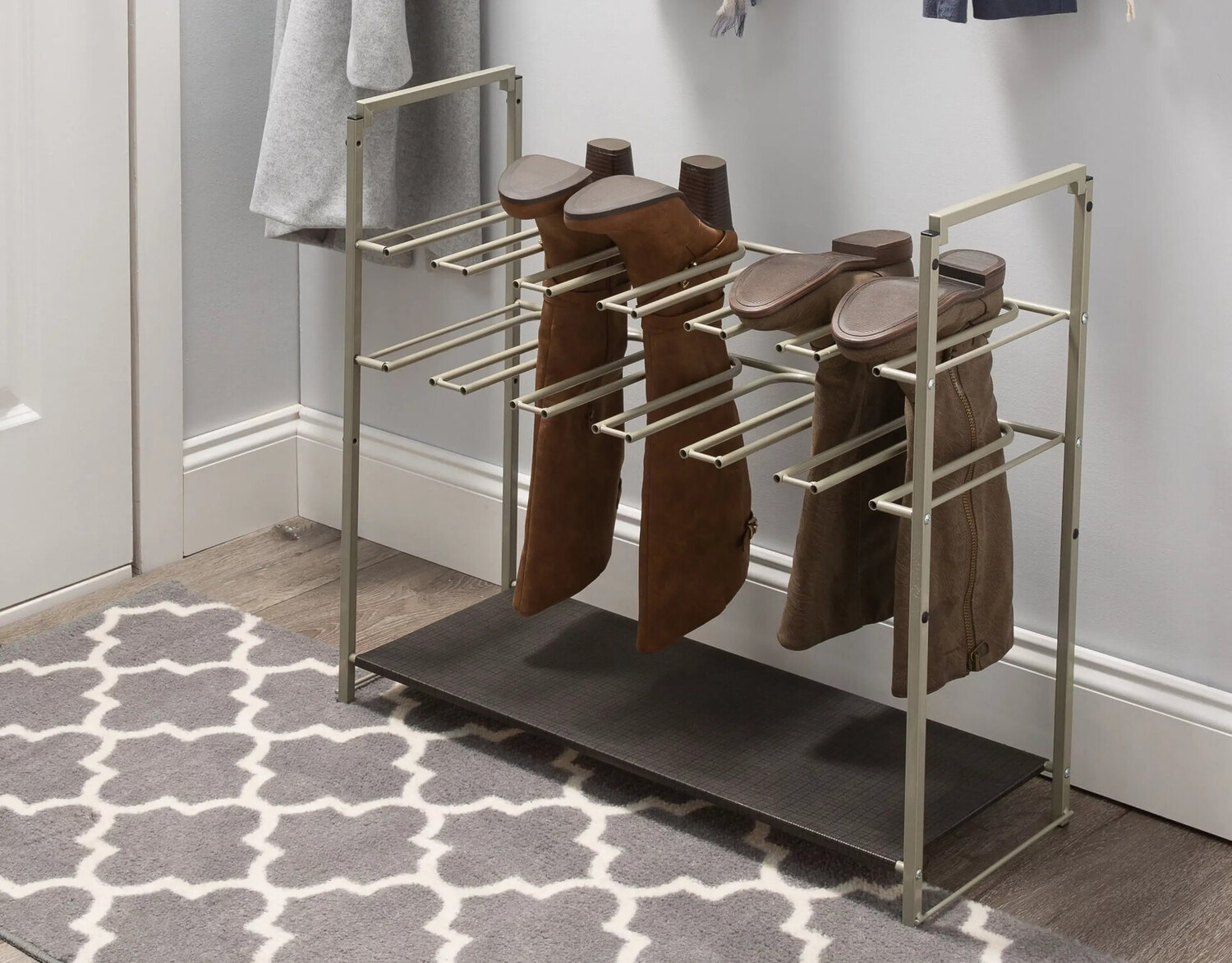

0 thoughts on “How To Store Winter Clothes In Small Space”